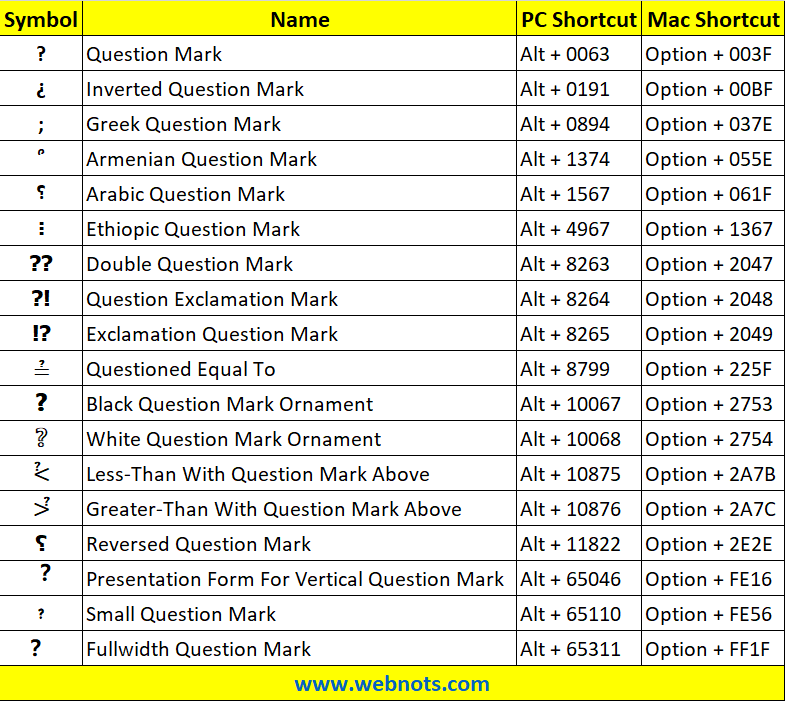


Notes: this, and not U+037E GREEK QUESTION MARK, is the preferred character U+003B SEMICOLON is the preferred character Equivalents: Thus, the rendering engine of the operating system may as well substitute the 037E character with the 003B character, even if there is a glyph available, since the two characters are canonically equivalent as Vasilis said. Quote The preferred character for the greek question mark is 003B (english semicolon), and this is not an advice of the operating systems engineers but of the Unicode charset. It did not form itself from Adam's mouth,Īnd it left in its wake a single teardrop, (From the limited edition of poems A Brief History of Punctuation by Maurya Simon, October 2002) Eats, Shoots & Leaves: The Zero Tolerance Approach to Punctuation by Lynne Truss, You can search inside the book.17th c.: By the end of the century the various marks have received their modern names, and the exclamation mark, quotation marks, and the dash had been added to the system.Over time this early symbol simplified to the mark we use today. At first this symbol consisted of a capital 'Q' atop a lowercase 'o'. Typographic historians contend that the design for the question mark was derived from an abbreviation of the Latin word quaestio (=what). 16th c.: The basic form of the question mark (?) was developed in sixteenth-century England.The source of these two new marks was apparently the system of musical notation used for Gregorian chant. Stops in the form of points or commas are joined by the mark later known as punctus elevatus (:) and by the question mark (punctus interrogativus), of much the same shape as the modern one but inclined to the right. 12th c.: Alcuin’s system reaches its perfection.9th c.: The Greek punctuation system is supplemented by the Greek form of question mark ( ).A.D.: Charlemagne’s Anglo-Saxon adviser Alcuin introduces the Carolingian minuscule script in Latin documents (the forerunners of our lowercase letters), along with the first evidence for a new system of punctuation. Aristophanes of Byzantium, librarian of the Museum at Alexandria, invents the critical signs, marks of quantity, accents, breathings, and so on, still employed in Greek texts. 200 B.C.: The beginnings of the Greek system of punctuation.Punctuation and the question mark: A timeline


 0 kommentar(er)
0 kommentar(er)
